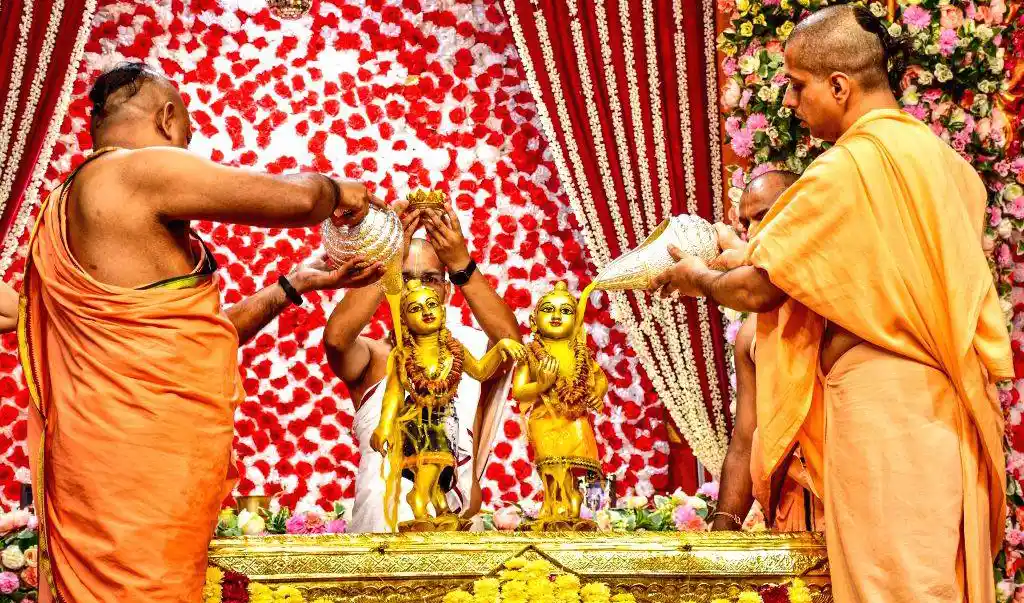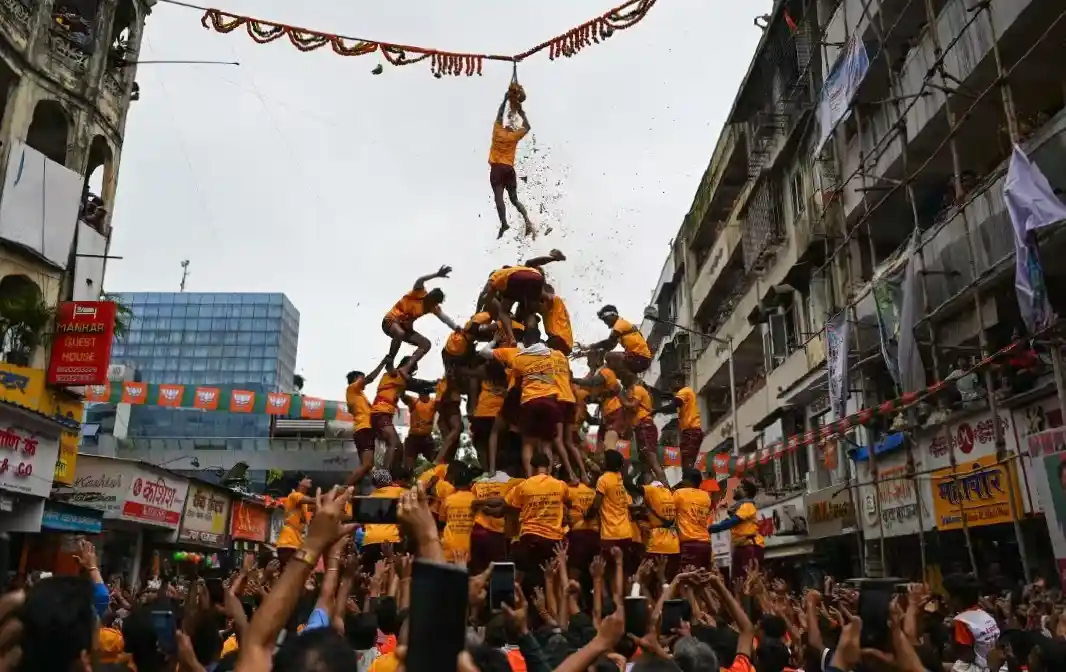Celebrating Janmashtami , also known as Krishna Janmashtami or Gokulashtami, is a prominent Hindu festival that celebrates the birth of Lord Krishna, one of the most beloved deities in Hinduism. Observed with great enthusiasm across India and among the Indian diaspora worldwide, Janmashtami embodies a deep cultural, spiritual, and religious significance. This article offers an in-depth exploration of Janmashtami, examining its origins, historical context, rituals, regional variations, and its evolving role in contemporary society.
The Historical and Mythological Significance of Janmashtami
The Birth of Lord Krishna
The story of Krishna’s birth is rooted in ancient Hindu scriptures, primarily the Bhagavata Purana, the Vishnu Purana, and the Mahabharata. Krishna, the eighth avatar of Vishnu, was born to Devaki and Vasudeva in a prison cell in Mathura, where they were imprisoned by Devaki’s brother, King Kamsa. According to legend, Kamsa had been warned that the eighth child of Devaki would be his destroyer. To protect Krishna, Vasudeva carried him across the Yamuna River to the village of Gokul, where he was raised by Nanda and Yashoda.
The Symbolism of Krishna’s Birth
Krishna’s birth is more than a historical event; it symbolizes the triumph of divine intervention and the protection of righteousness (dharma) over evil (adharma). His arrival marked the beginning of the end for Kamsa’s tyranny, as Krishna eventually vanquished him and restored peace. Krishna’s life and teachings offer profound insights into spirituality, duty, and devotion.
Krishna’s Role in Hindu Philosophy
Krishna’s teachings, especially those found in the Bhagavad Gita, are central to Hindu philosophy. The Gita, a part of the Mahabharata, presents a dialogue between Krishna and the warrior Arjuna on the battlefield of Kurukshetra. It addresses the moral and philosophical dilemmas faced by Arjuna, offering guidance on duty (dharma), righteousness, and the nature of reality. Krishna’s teachings have had a lasting impact on Hindu thought and practice.

Traditional Rituals and Celebrations
Preparations Leading Up to Celebrating Janmashtami
The lead-up to Janmashtami involves a period of spiritual preparation and physical cleansing. Temples and homes are meticulously cleaned and decorated with flowers, lights, and colorful rangoli (decorative patterns made on the floor). Devotees often begin fasting a day before the festival, preparing themselves for the midnight celebrations that mark Krishna’s birth.
The Day of Janmashtami
The festival is observed with fervent devotion, with celebrations peaking at midnight, the time believed to be Krishna’s birth. Devotees gather in temples and homes to perform special rituals, including:
- Vrat (Fasting): Many devotees observe a fast from sunrise to midnight, consuming only fruits and milk. The fast is broken after the midnight aarti (ritual of offering light) when Krishna’s birth is celebrated.
- Bhajans and Kirtans: Devotional songs and hymns dedicated to Krishna are sung throughout the day. These musical offerings create a devotional atmosphere and help devotees connect with Krishna’s divine presence.
- Aarti: A significant ritual is the midnight aarti, where an image or idol of Krishna is worshipped with offerings of flowers, incense, and light. This is followed by the distribution of prasad (sacred food offerings).
Dahi Handi
One of the most lively and colorful rituals associated with Janmashtami is Dahi Handi, especially popular in Maharashtra and other parts of Western India. In this tradition, a clay pot filled with curd, butter, and other goodies is hung high above the ground. Teams of young men form human pyramids to reach and break the pot, symbolizing Krishna’s love for butter and his playful nature. The event is often accompanied by music, dance, and celebrations.
Ras Lila
In regions like Vrindavan and Mathura, the Ras Lila is performed during Janmashtami. This traditional dance-drama reenacts the various episodes of Krishna’s life, including his playful interactions with the gopis (milkmaids) and his divine love. The Ras Lila combines music, dance, and storytelling, creating a vibrant and immersive experience for spectators.

Regional Variations of Celebrating Janmashtami
North India
- Mathura and Vrindavan: These two towns are considered the birthplace and early home of Krishna. Celebrations here are elaborate, with processions, devotional music, and reenactments of Krishna’s life. The streets are decorated with lights and flowers, and thousands of pilgrims and tourists gather to participate in the festivities.
- Delhi and Uttar Pradesh: In Delhi, the festival is marked by special prayers and processions, while in Uttar Pradesh, various temples and local communities organize events that include devotional singing, dancing, and community meals.
South India
- Tamil Nadu: In Tamil Nadu, Janmashtami is known as “Gokulashtami.” The festival is celebrated with special prayers and rituals in temples, including the recitation of Krishna’s stories from the Puranas. Devotees prepare traditional sweets and offer them to Krishna.
- Karnataka: In Karnataka, the festival is observed with great fervor, with processions and cultural programs held in temples. Traditional dishes are prepared, and special prayers are offered.
Western India
- Gujarat: In Gujarat, Janmashtami is celebrated with vibrant processions and devotional singing. The festival is also marked by traditional dances, such as Garba, and community gatherings.
- Maharashtra: The Dahi Handi ritual is a highlight of the celebrations in Maharashtra. The event is celebrated with great enthusiasm, and various local groups compete to break the pot, often organizing large-scale events and competitions.
The Global Reach of Janmashtami
The Indian Diaspora
Janmashtami has transcended geographic boundaries, with celebrations observed by the Indian diaspora in countries like the United States, Canada, the United Kingdom, Australia, and South Africa. Temples and cultural organizations in these countries host events that include devotional services, cultural programs, and community gatherings. The festival provides an opportunity for the diaspora to connect with their cultural heritage and share it with others.
International Recognition
In recent years, Janmashtami has gained recognition beyond the Indian community. Various cultural and educational institutions around the world acknowledge the festival, organizing events that highlight its significance and promote intercultural understanding. The celebration of Janmashtami in global cities often includes cultural performances, lectures, and exhibitions that showcase Hindu traditions and values.


The Contemporary Evolution of Janmashtami
Technological Influences
The advent of technology has transformed the way Janmashtami is celebrated and observed. Social media platforms, live streaming, and virtual events have enabled devotees from around the world to participate in the festival, even if they cannot attend in person. Online communities and virtual celebrations offer a new dimension to traditional practices, allowing for greater global connectivity and engagement.
Cultural Fusion and Innovation
Janmashtami celebrations have increasingly incorporated modern elements, blending traditional practices with contemporary lifestyles. This includes the use of digital media, creative arts, and fusion music to enhance the festive experience. Cultural programs often feature innovative performances and artistic expressions that reflect the dynamic nature of the festival.
Environmental and Social Initiatives
In recent years, there has been a growing emphasis on environmental and social responsibility during Celebrating Janmashtami. Many communities and organizations are adopting eco-friendly practices, such as using biodegradable materials for decorations and reducing waste. Additionally, charitable activities, such as food drives and community service, are often organized to align with the festival’s spirit of compassion and generosity.
Reflections on the Significance of Janmashtami
Spiritual Insights Celebrating Janmashtami
Janmashtami serves as a reminder of the divine presence in everyday life and the importance of adhering to one’s spiritual values. The festival encourages devotees to reflect on Krishna’s teachings and strive to incorporate them into their own lives. It is a time for spiritual renewal and growth, as well as a celebration of the eternal bond between the divine and the human.
Community and Cultural Identity
The festival fosters a sense of community and strengthens cultural identity. Celebrating Janmashtami bring together people from diverse backgrounds, creating a shared experience of devotion and joy. The festival also plays a crucial role in preserving and transmitting cultural traditions, ensuring that future generations continue to value and celebrate their heritage.
The Future of Janmashtami
As society evolves, Janmashtami will continue to adapt while preserving its core values and traditions. The festival’s ability to blend tradition with modernity will likely influence its future observance. Continued innovation and engagement with global audiences will ensure that Janmashtami remains a vibrant and relevant celebration for generations to come.
Conclusion
Janmashtami is a multifaceted festival that celebrates the divine birth of Lord Krishna, reflecting a rich tapestry of religious, cultural, and spiritual significance. From its historical origins to its modern-day observances, Janmashtami encompasses a wide range of traditions and practices that resonate with people across the world. Whether through elaborate rituals, vibrant celebrations,
